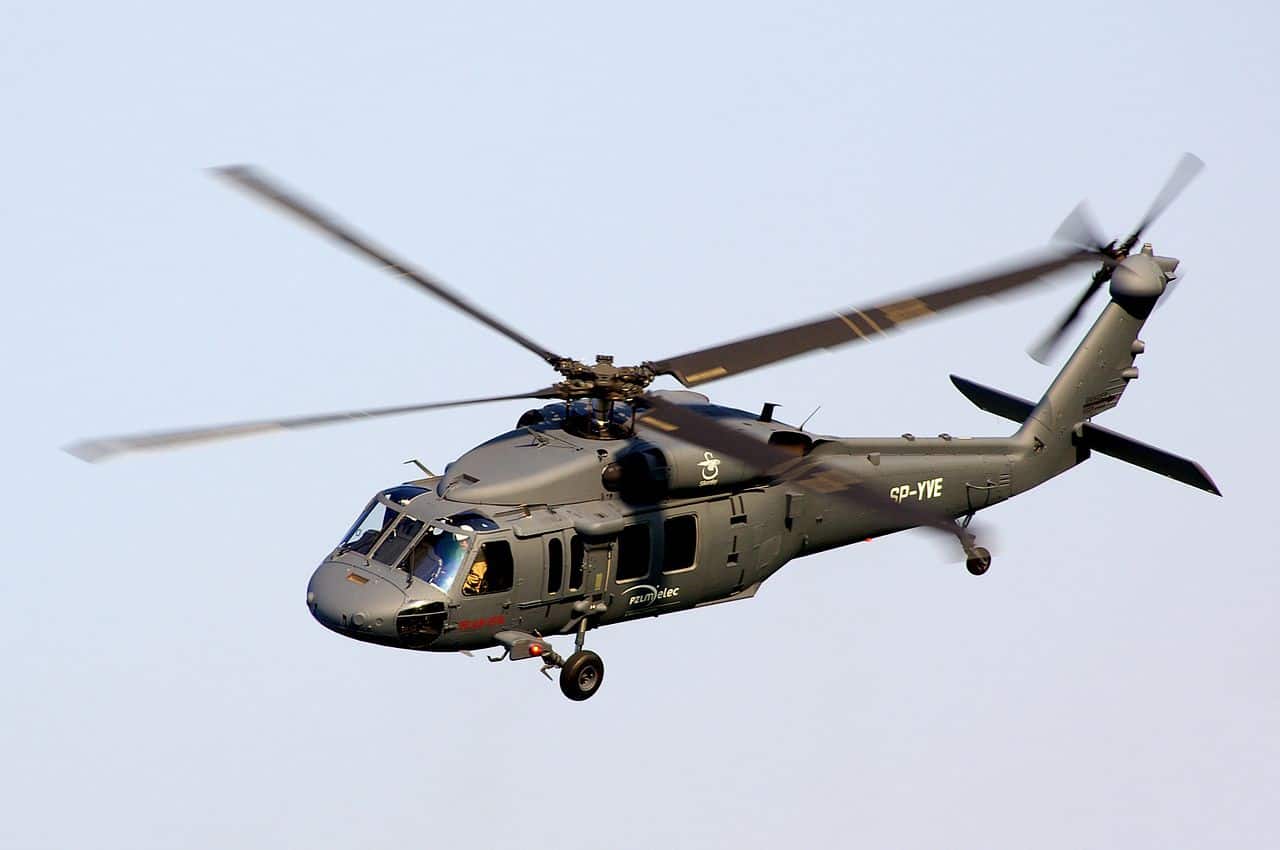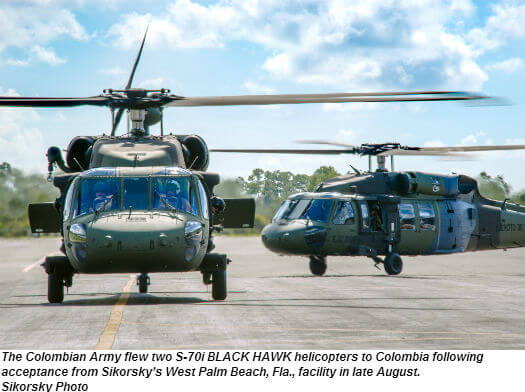Sikorsky S 70: Enhancing Helicopter Performance and Convenience
Sikorsky S 70: Enhancing Helicopter Performance and Convenience
Blog Article
Rotary-Wing Aircraft Offering Superior Durability and Accuracy Design
In the realm of aeronautics, rotary-wing aircraft have long been acknowledged for their one-of-a-kind abilities in numerous operational environments. From armed forces objectives to noncombatant applications, the advancement of rotary-wing technology has paved the method for equipments that offer exceptional longevity and accuracy design. Through improvements in products and building and construction strategies, paired with innovative flight control systems, these aircraft have become important tools for tasks that demand both toughness and precision. As we discover the detailed equilibrium in between technology and integrity in rotary-wing airplane, it comes to be noticeable that the merging of sophisticated modern technology and tried and tested layout concepts has actually established a brand-new criterion for efficiency and effectiveness in the aerospace market.
Advancement of Rotary-Wing Modern Technology
Throughout the history of aviation, the evolution of rotary-wing modern technology has actually been a testimony to consistent development and development in aerial engineering. From the early days of upright trip with basic layouts to the advanced helicopters and other rotary-wing airplane of today, the progression in this area has been impressive.
In the very early 1900s, leaders like Igor Sikorsky and Juan de la Cierva made considerable strides in rotary-wing technology. Sikorsky's VS-300 helicopter, initial flown in 1939, marked a zero hour in the growth of practical rotary-wing airplane. This success paved the method for more innovations in upright flight capacities.

Today, rotary-wing airplane play critical roles in various industries, including armed forces operations, emergency medical services, police, and commercial transportation. The evolution of rotary-wing technology remains to press the borders of what is feasible in upright trip, making sure that these airplane stay vital possessions in the air travel market.
Materials and Construction Innovations
Demonstrating a fusion of cutting-edge products and specific building and construction strategies, rotary-wing airplane have actually gone through significant advancements in resilience and performance. One of the vital advancements in products utilized for rotary-wing aircraft is the raising usage of composite materials. These materials, such as carbon fiber reinforced polymers, use a high strength-to-weight ratio, enhancing both the structural honesty and general performance of the aircraft. Furthermore, innovations in producing processes have actually enabled more detailed and exact building of rotary-wing components, adding to improved the rules of aerodynamics and effectiveness.
In addition, the integration of innovative coatings and surface therapies has played a vital role in improving the longevity of rotary-wing aircraft. These finishings give protection against deterioration, abrasion, and severe weather conditions, expanding the lifespan of the aircraft and minimizing upkeep needs.
In terms of building advancements, additive production, additionally called 3D printing, has reinvented the manufacturing of complex components for rotary-wing aircraft. resource This innovation enables quick prototyping and modification, resulting in quicker advancement cycles and minimized prices. On the whole, the continuous evolution of materials and building methods is driving the abilities and performance of rotary-wing aircraft to new heights.
Precision Flight Control Systems

The integration of GPS modern technology even more boosts the accuracy and integrity of these systems, permitting specific navigation, waypoint monitoring, and automated flight control. sikorsky s 70. This degree of precision not just enhances the security of rotary-wing procedures however additionally improves total operational effectiveness and mission efficiency
In addition, the constant innovations in synthetic knowledge and machine discovering have actually helped with the advancement of independent flight abilities within Accuracy Flight Control Solution. This makes it possible for rotary-wing aircraft to carry out intricate goals with exceptional precision and uniformity, making them essential possessions in a vast range of applications, including armed forces procedures, search and rescue goals, and aerial photography.
Longevity in Testing Environments
In demanding operational setups, rotary-wing airplane show remarkable durability and toughness, making certain optimum performance under challenging environmental conditions. These aircraft are created to hold up against a wide variety of environmental factors, including extreme temperatures, high winds, and rough terrain, making them well-suited for various missions in diverse landscapes.
One key factor adding to the resilience of rotary-wing aircraft is their rugged construction. These airplanes are constructed making use of high-grade products and progressed design methods to enhance their structural integrity and integrity. In addition, parts such as rotor blades, engine systems, and touchdown equipment are carefully developed to withstand the stresses and pressures come across during operations in tough settings.
Moreover, rotary-wing aircraft are equipped with innovative onboard systems that keep an eye on performance metrics in real-time, permitting aggressive maintenance and early discovery of prospective issues - sikorsky s 70. This aggressive technique helps protect against unanticipated failures and ensures the ongoing airworthiness of the aircraft in requiring operational setups. Generally, the resilience of rotary-wing airplane in difficult environments is a testimony to their superior design and design, making them indispensable possessions for various mission-critical procedures
Maintenance and Integrity Specifications
The adherence to strict upkeep and reliability criteria is critical in ensuring the ideal efficiency and security go of rotary-wing airplane. Regular upkeep checks, conducted by licensed technicians, are vital to identify and deal with any kind of potential problems prior to they compromise the airplane's capability. These checks encompass a detailed exam of all crucial parts, consisting of the engine, rotor system, avionics, and hydraulic systems, to ensure that they remain in prime working condition.
Additionally, adherence to scheduled maintenance intervals according to manufacturer guidelines is important for promoting the aircraft's reliability. This positive strategy aids avoid unforeseen malfunctions and ensures that the aircraft remains airworthy for its designated objectives. In addition, the execution of robust reliability standards, such as routine element testing and replacement based on established lifecycles, additionally improves the airplane's reliability.
Verdict

Finally, the innovations in rotary-wing airplane modern technology have actually caused remarkable toughness and accuracy design. With ingenious materials and construction techniques, along with precision flight control systems, these airplane can run in difficult atmospheres with enhanced reliability. The upkeep and integrity requirements guarantee that these rotary-wing aircraft remain to execute at their finest, making them necessary possessions for various industries.
Showing a blend of advanced materials and specific building techniques, rotary-wing airplane have undertaken considerable developments in resilience and efficiency. One of the essential innovations in products used for rotary-wing airplane is the enhancing application of composite products.With meticulous focus to detail and progressed technical integration, rotary-wing aircraft have actually accepted Accuracy Flight Control Equipment as a cornerstone of their functional excellence. Generally, the resilience of rotary-wing airplane in her latest blog challenging atmospheres is a testimony to their exceptional design and design, making them vital assets for different mission-critical procedures.
In conclusion, the improvements in rotary-wing aircraft innovation have actually led to exceptional longevity and precision design.
Report this page